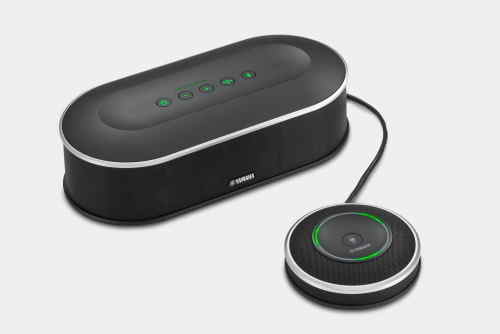Travelling with audio conferencing equipment
I prefer to bring audio conferencing equipment with me when I organize a meeting. This article is a review of the Yamaha YVC-1000, used in combination with wireless microphones, connectors, cables and mixers. All light-weight and easily carried.
The hotels where these meetings are typically hosted don’t have the equipment for meetings with:
- 20-200 participants in the room, each bringing their laptop to the room.
- 20-200 participants on-line, via Zoom, WebEx, or Teams.
This article is about getting the audio quality right, for people in the room as well as for the people on-line.
The requirements for the audio-conferencing equipment are:
- Audio output without distortion and loud enough to hear the people on-line without external speaker in a meeting with up to 20 people in the room.
- Perfect echo-cancellation
- Possibility to connect external speakers
- Possibility to connect wireless microphones
- Total weight and size must be below limit of economy-class check-in luggage.
Yamaha YVC-1000 Review
I found the YVC-1000 very suitable. Up to 5 wired microphones can be connected. The YVC-1000 connects via USB to the laptop that hosts the web meeting. That configuration is sufficient for meetings with up tp 20 participants. I have even carried the equipment in a back pack.
Using the YVC-1000 in small meeting rooms
The Yamaha YVC-1000 is ideal for audio conferencing with up to 20 participants in the meeting room. The 5 wired microphones are on the tables. Just make sure that the speaker unit is as far away as possible from the microphones. That will improve echo cancellation.
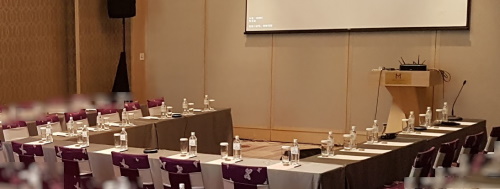
Using the Yamaha YVC-1000 in large meeting rooms
It is also possible to use the YVC-1000 in meetings with more participants. You will need to connect the Yamaha to external speakers and add wireless microphones.
Here are some guidelines to make this work optimally:
Use the internal speakers of the YVC-1000 to cover the front of the room, near the screen. Use the external speakers to cover the back of the room. Connect the external speakers to the YVC-1000 speaker output. Don’t use the “audio out” connectors.
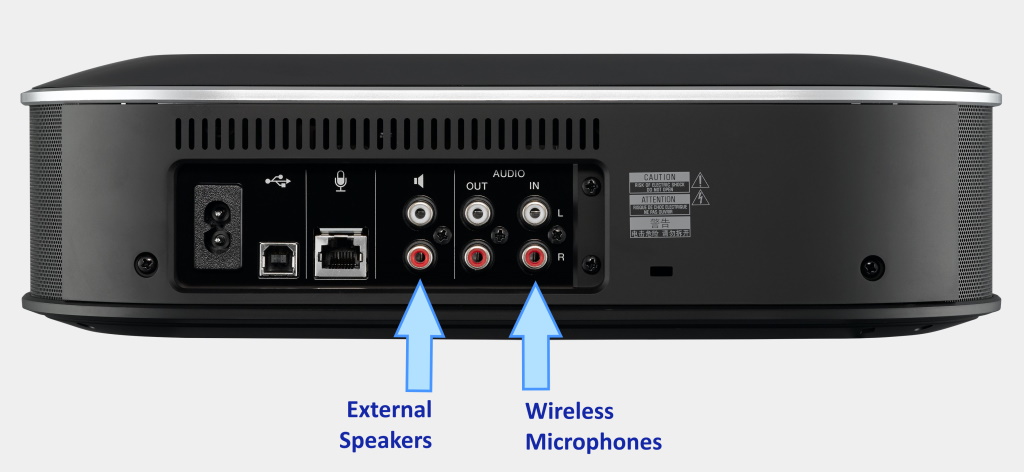
Connect the output of the wireless microphones to the “audio in” of the YVC-1000. Don’t connect the wireless microphones directly to the external speakers. The people on-line will not hear the speakers in the room properly when the wireless microphones are connected directly to external speakers.
You can connect up to 2 wireless microphones to the YVC-1000 (use the left and right “audio in” connectors). You will need a mixer when you connect more than 2 wireless microphones. That can be a simple passive splitter. I have good experience with the ARTcessories SPLITMix4 – Four Channel Passive Splitter/Mixer.
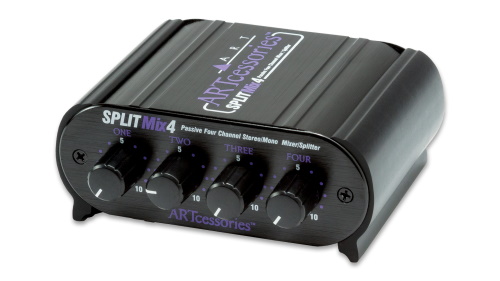
Cables and connectors
The YVC-1000 uses RCA-connectors for audio input and output. External speakers and mixers tend to use XLR connectors and balanced audio cables. I used the simple Stagebug SB-2 passive DI box from Radial Engineering as interface between the YVC-1000’s speaker output and the XLR cable to the external speaker. This makes it possible to use standard cables with RCA connectors on both ends instead of a cable that has XLR at one end and RCA at the other end.
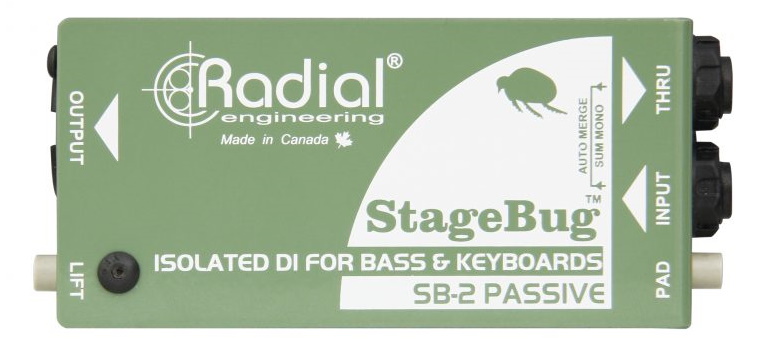
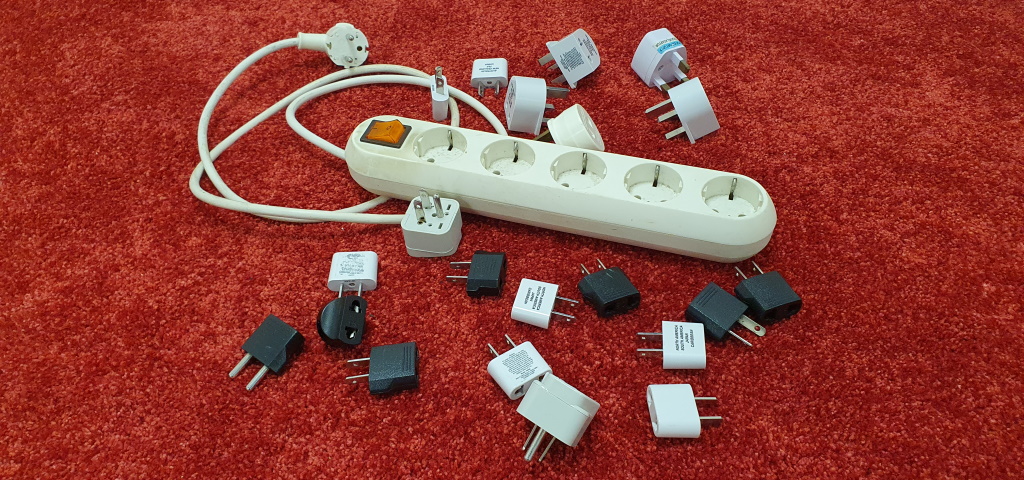
And bring plenty of travel adaptors to connect the equipment to the local mains. Bring a power strip!
Wireless Microphones: Complications
Wireless microphones operate on different frequencies in different countries. Equipment that is purchased in one country may be illegal in another country. There are two options:
- Rent the equipment locally, Make sure you have the cables and connectors needed to connect the equipment with the YVC-1000. Renting a mixer together with the microphones can make that a bit easier because you will only need to worry about connecting the mixer to the YVC-1000.
- Use wireless microphones that operate in frequency bands that are allowed everywhere: 2.4GHz. In this case, the complication is that Wi-Fi uses the same band and microphones and laptops can interfere. When you experience interference, it can help to put laptops and phones that are close to the microphone’s base station into airplane mode.
I have good experience with Line-6 XD-V microphones.
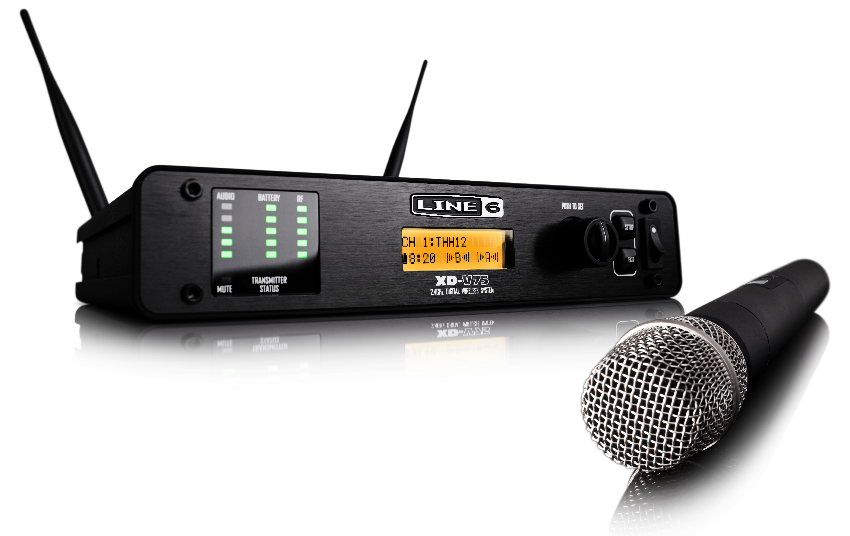
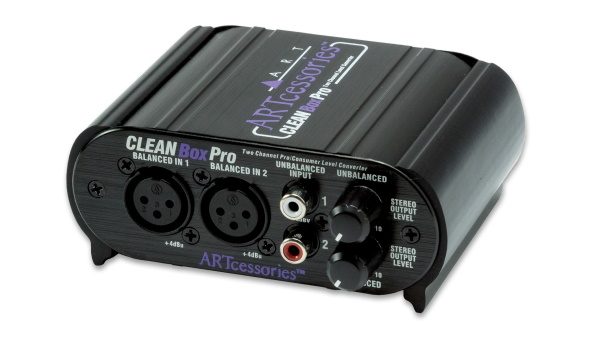
You can consider to use the ARTcessories CLEANBox Pro when you need to send microphone output via a balanced XLR cable to an RCA input for the YVC-1000. Avoid cables with XLR connector at one and and RCA at the other end because they can easily pick up noise.
Further reading
The article “Organizing Successful Meetings” covers other aspects of meeting management.
The article “The Psychology of Meeting Rooms” explains that the layout of a meeting room determines how participants interact and how they understand the role of chair.
The “Guide to chairing an industry alliance meeting” shows how the chair can make the meeting successful by getting decisions made efficiently.

